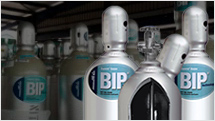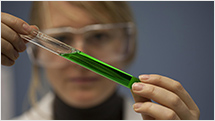Frequently Asked Questions
- What are Non-Refillable cylinders?
- Which gas mixtures are available in non-refillable cylinders?
- What is 'Bump' Testing?
- What are the benefits of using non-refillable canisters versus traditional refillable cylinders?
- How much gas do the canisters hold?
- How many bump tests can I get from a canister?
- Do I pay rental on non-refillables?
- What are the LEL values of flammable components?
Q: What are Non-Refillable cylinders?
Non-refillable cylinders or canisters are a new mode of supply for Air Products' Speciality Gases. They are highly portable and easy to use, which makes them ideal for applications such as function checking of gas detection equipment, instrument calibration, laboratory use, and field based applications.
Like all calibration gases manufactured by Air Products, these non-refillable cylinders are issued with a traceable Certificate of Analysis in accordance with ISO 6141. A range of simple to use gas control equipment and accessories provide a complete solution.
Q: Which gas mixtures are available in non-refillable cylinders?
Air Products supply an extensive range of mixtures in non-refillable cylinders. Many common mixtures used in gas detection, landfill gas analysis, food atmosphere analysis, refrigerant leak detection, and gas chromatography are available from stock.
In the field of gas detection, it has become increasingly important to undertake regular function testing to prove the operation of an instrument, particularly personal gas detectors. This is often called 'bump' testing.
Many gas detection instruments fail in an unsafe way, and portable instruments are particularly vulnerable due to the nature of their use. Sudden failure of the detector does not result in an alarm state, which may result in a 'non-reading' situation in the event of a gas leak, or build up of a hazardous atmosphere.
Such testing is often done by the operator using the gas detection equipment, rather than by a technician in a calibration workshop. This has given rise to the development of centralised testing station or 'bump test stations', where operators can quickly test their equipment. Such stations may be supplied with test gas from traditional refillable cylinders or non-refillables. But many operators will test their gas detectors directly using non-refillable cylinders for convenience.
Q: What are the benefits of using non-refillable canisters versus traditional refillable cylinders?
The main advantage is portability, enabling calibration to be carried out in the field as well as in the workshop or laboratory. They are easy to use because no tools are required to connect the gas control equipment to the canister. There are no monthly rental costs or facility fees to consider, thus reducing the costs and hassle associated with having calibration gases on site. Transportation costs of non-refillables also tend to be lower than for conventional cylinders.
Q: How much gas do the canisters hold?
There are four non-refillable canister options. The largest non-refillable canister holds 110 gas litres. The smallest, aerosol-type canister provides 10 gas litres. Compare this to the gas capacity of a traditional 50 litre refillable cylinder, filled to 200 Bar, which gives 10,000 gas litres. Non-refillables are ideal where smaller quantities of gas are needed.
Q: How many bump tests can I get from a canister?
There are a number of factors that affect the number of bump tests achievable from a single non-refillable canister. These include;
- The flow rate of the gas required by the instrument. The manufacturer of the instrument will normally recommend the optimum flow rate in their operating procedures. Selecting a suitable fixed flow regulator from a wide range will maximise the number of bump tests possible from the canister.
- Using a demand-flow type regulator with instruments fitted with internal pumps further optimises the process. These units limit the flow of gas to that demanded by the instrument. This means there is no wasted gas and no need for T-piece arrangements.
- Using compatible regulator materials and keeping lengths of tubing as short as possible speed up instrument response time. Stainless steel regulators are available for mixtures with reactive components like H2S. Air Products supply a short length of compatible tubing with each regulator package to ensure best results.
- Other factors affecting the number of bump tests include the instrument response time and the sensor technology. These characteristics can be found in the manufacturers operating manual.
- Many manufacturers offer instrument ‘ docking stations’, which automate the bump testing or calibration procedure and help keep gas usage to a mínimum.
The largest non-refillable canister in the Air Products range holds 110 gas litres. An instrument with a response time of 10 seconds using a fixed flow of gas of 1.0 lpm might be tested several hundred times using one such canister.
Q: Do I pay rental on non-refillables?
There are no rental charges associated with non-refillable canisters.
Q: What are the LEL values of flammable components?
‘LEL’ is the lower explosive limit of a gas which is an important characteristic of flammable components in the field of gas detection. Users wishing to test flammable gas sensors should be aware that there is more than one standard for determining the lower explosive limit of flammable components. The ISO 10156:2010 and IEC 60079-20:2000 standards are both commonly referred to in different areas of industry and in different world regions. For most components, the quoted LEL values are the same, but there are a number of important differences. As these international standards are reviewed and updated over time, make very sure you order the correct gas mixture by requesting the volume percent level, because in some cases, requesting a percentage LEL is ambiguous.





